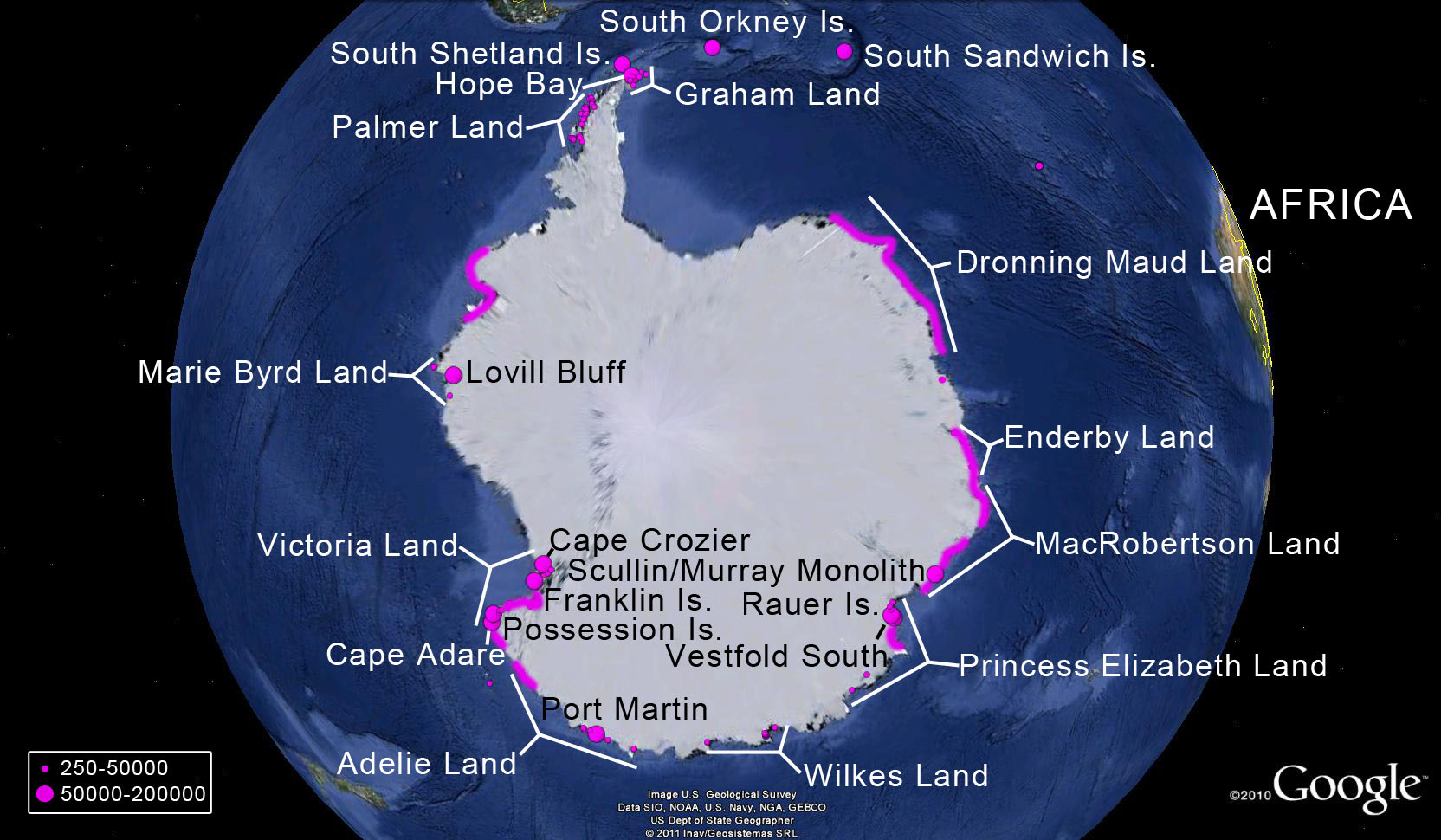Adélie penguin - Pygoscelis adeliae
- DESCRIPTION
- Medium-sized penguin (70 cm in length and 3.9-5.35 Kg), the female is usually significantly smaller. The head, chin, throat, upper parts of the body, back and tail are blue-black. This fades to brown with wear. The under-parts and belly are white. The flippers are blue-black on their dorsal surface but with a narrow white trailing edge. Tail forming a characteristic ‘brush-tail’. Brown eye, ringed by a distinctive white circle. Bill mostly black, covered in feathers for over half its length and hence appears short. Legs covered in white feather. Pink feet with black soles
- DISTRIBUTION
-
Circumpolar, endemic of Antactica, most of the population located in the Ross
Sea region.

- HABITAT
- Marine. The Adélie penguin lives on sea ice but needs the ice-free land to breed. Adélie penguins are highly migratory, with birds at sea between May and August. The nest is a small depression lined with stones piled together.
- BREEDING BIOLOGY
- Adults arrive at the breeding ground between September and October. Adélie penguin often nesting in very large colonies (sometimes up to 200,000 pairs) and at high densities. Egg-laying begins in October and may last into November, typically lay two eggs, with incubation lasting approximately 32 to 34 days. Both parents take turns in incubating the eggs and foraging at sea. Fledging is at 50-56 days.
- FEEDING
- Mainly krill Euphausia superba and E. crystallorophias, and fishes, especially Pleuragramma antarcticum). Squids make relatively small contributions.
- REPRODUCTIVE POPULATION
- 4,000,000/5,000,000 pairs.
- CONSERVATION STATUS AND THREATS
- Least concern species (IUCN Red List 2018) due to the large range, large population size and stable trend. Their main threats are climate change, habitat degradation, human disturbance, oil pollution.
- SOURCE
- Trathan, P.N. 2011. The Adélie penguin, Pygoscelis adeliae (Hombron and Jacquinot, 1841). In PENGUINS: NATURAL HISTORY AND CONSERVATION (García Borboroglu, P.G. and Boersma P.D. eds.) University of Washington Press, Seattle U.S.A.




